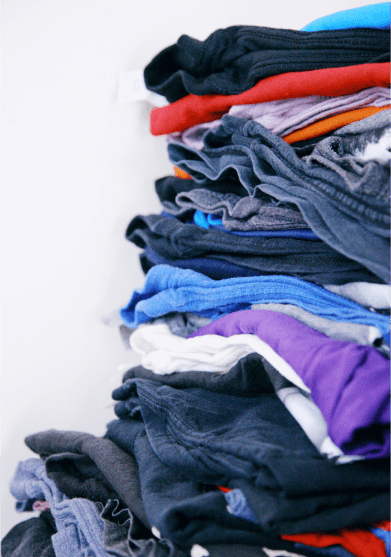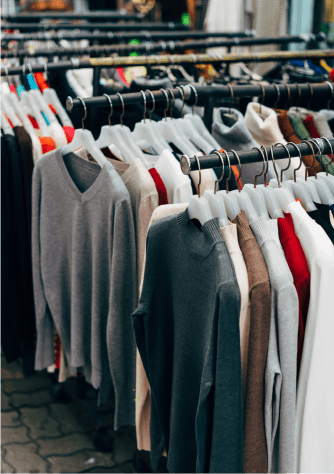Why Worth its Weight
Selling your items to Worth its Weight, is not just about the money you can earn, but also about the positive benefits in terms of the environment and other factors. Here’s why you should feel good about working with us:
The Environment
- You are helping to reduce the carbon footprint of clothes production, by extending the life of used clothes
- Every kg of clothes creates around 20 kg of CO2 during production.
- In 2022, we collected and redistributed over 4 thousand tons of used clothing. This saved our atmosphere of 80 thousand tons of CO2 in just one year, that is the equivalent to what 14, 500 UK households produce in a year.

1 Kg of Clothing

20 Kg Co2
Water Used in the Production of Clothes
Cotton is the most common material in our clothes, it accounts for around 60% worldwide.


It takes over 10 000 litres of fresh water to produce just 1kg of cotton.

We reuse or recycle 2,400,000 kg of cotton in a year, that is 24 billion litres of freshwater saved, the equivalent of what 470 000 Brits consume in a year.


Toxic Chemicals Used in Clothing Production
- Many carcinogenic chemicals are used in clothing manufacturing, such as:
- Formaldehyde
- Azo dyes
- Phthalates
- Perfluorinated compounds (PFC’s)
- Lead
- Cadmium
- When old clothes end up in our landfills, these toxins are released into the soil during the decomposition process and are extremely harmful to the environment.
- The UK produces around 1.5 million tons of textile waste each year, a significant portion of this is still going to landfills.


Economic Benefits
- Second hand clothes are significantly cheaper to buy than new clothes.
- The second hand clothing market creates many jobs along the journey from Worth its Weight back to someone’s wardrobe in a poorer country.
- This creates revenue for the businesses that collect the clothes and the charities that benefit from this process.
- Saves on landfill space and the costs associated in managing landfills.
- Saves on natural resources that can be used to produce something else.
What Happens to My Stuff?
It gets used again and again. After you have dropped off your things, they are taken to one of our warehouses where they are packed into pallet boxes, transported to a distribution hub and then on to a port, to be shipped to the sorting warehouse. Once there, the container is unpacked and sorted, which involves placing the items into separate pallet boxes such as ‘cutlery, crockery, pots & pans, small electrical items, toys, stationary, ornaments etc’.
These pallet boxes now contain just one type of item, for example, small electrical goods. They are then sent to their destination markets, somewhere in the world that needs them. When the container arrives at its final destination, it is unpacked and taken to local warehouses for redistribution into the local economy.
It sounds like a lot of travelling but it is still considerably less than the amount new manufactured items need. For new items there are other factors, such as the additional mileage of transporting the raw materials from mines or farms to processing factories and from these factories to the steel works, chemical factories and paper or textile mills.
From here they are again transported to where the factories that manufacture the goods.. From the factory, goods still need to be transported to warehouses, ports, distribution hubs, warehouses again, shops and finally delivered to you.
